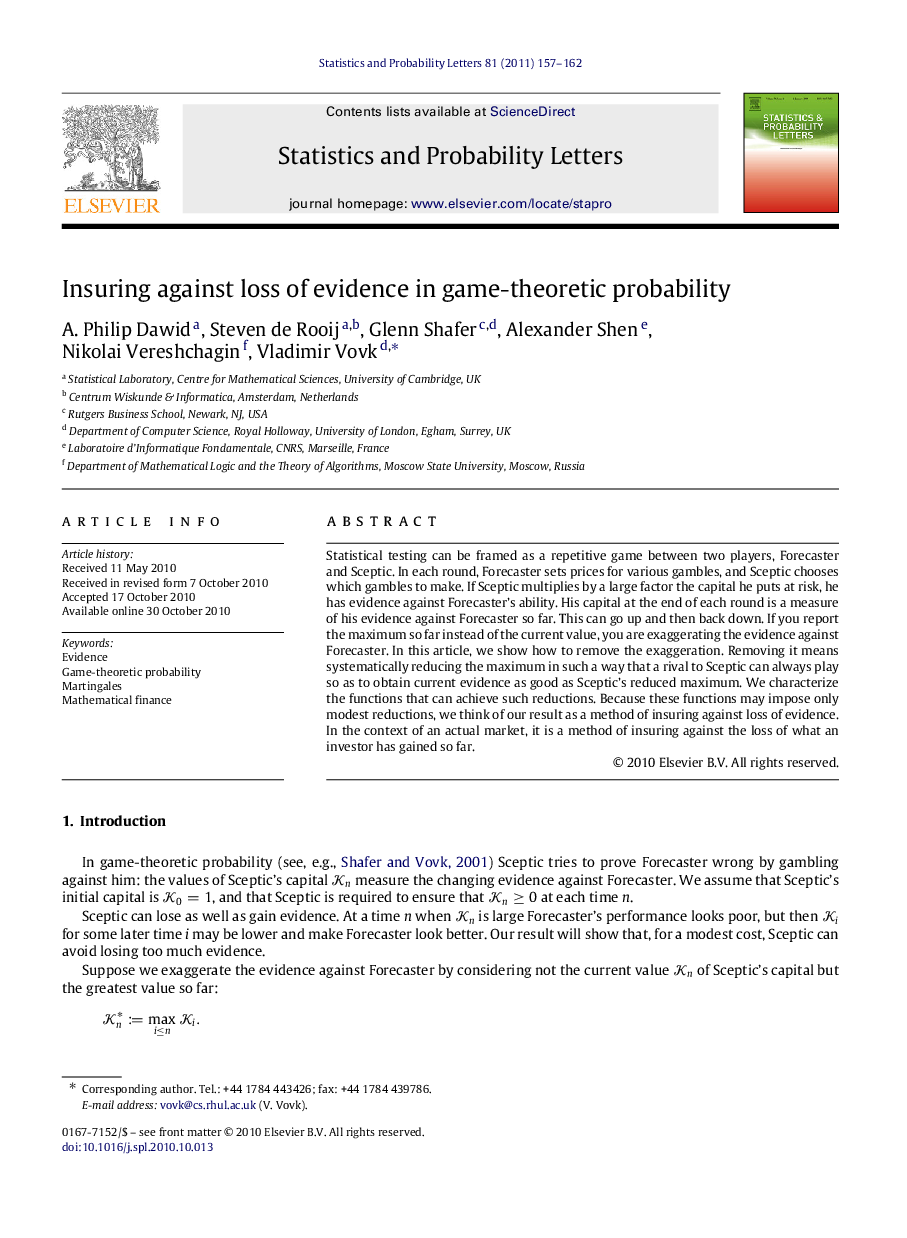| Article ID | Journal | Published Year | Pages | File Type |
|---|---|---|---|---|
| 1153673 | Statistics & Probability Letters | 2011 | 6 Pages |
Statistical testing can be framed as a repetitive game between two players, Forecaster and Sceptic. In each round, Forecaster sets prices for various gambles, and Sceptic chooses which gambles to make. If Sceptic multiplies by a large factor the capital he puts at risk, he has evidence against Forecaster’s ability. His capital at the end of each round is a measure of his evidence against Forecaster so far. This can go up and then back down. If you report the maximum so far instead of the current value, you are exaggerating the evidence against Forecaster. In this article, we show how to remove the exaggeration. Removing it means systematically reducing the maximum in such a way that a rival to Sceptic can always play so as to obtain current evidence as good as Sceptic’s reduced maximum. We characterize the functions that can achieve such reductions. Because these functions may impose only modest reductions, we think of our result as a method of insuring against loss of evidence. In the context of an actual market, it is a method of insuring against the loss of what an investor has gained so far.
